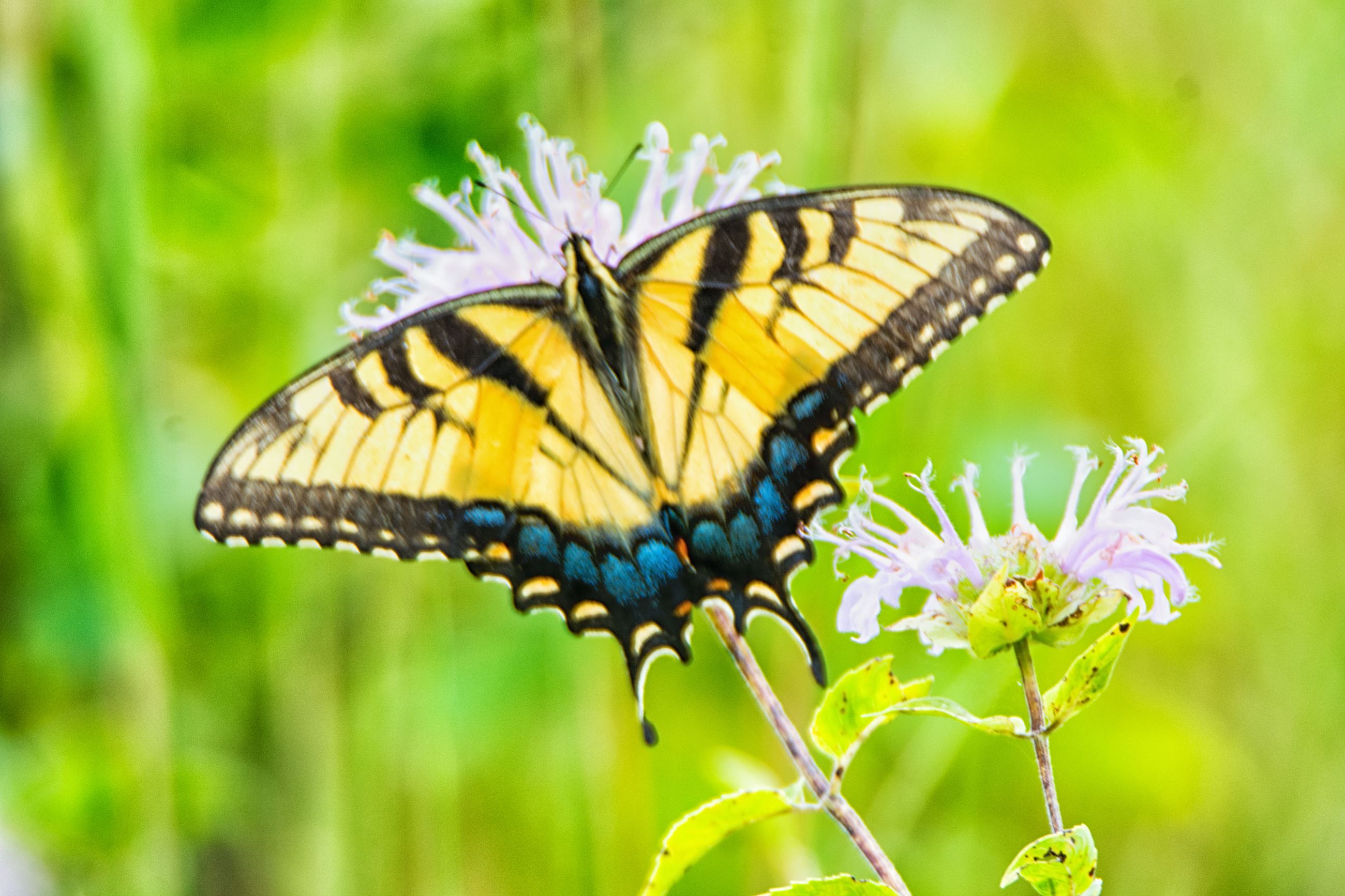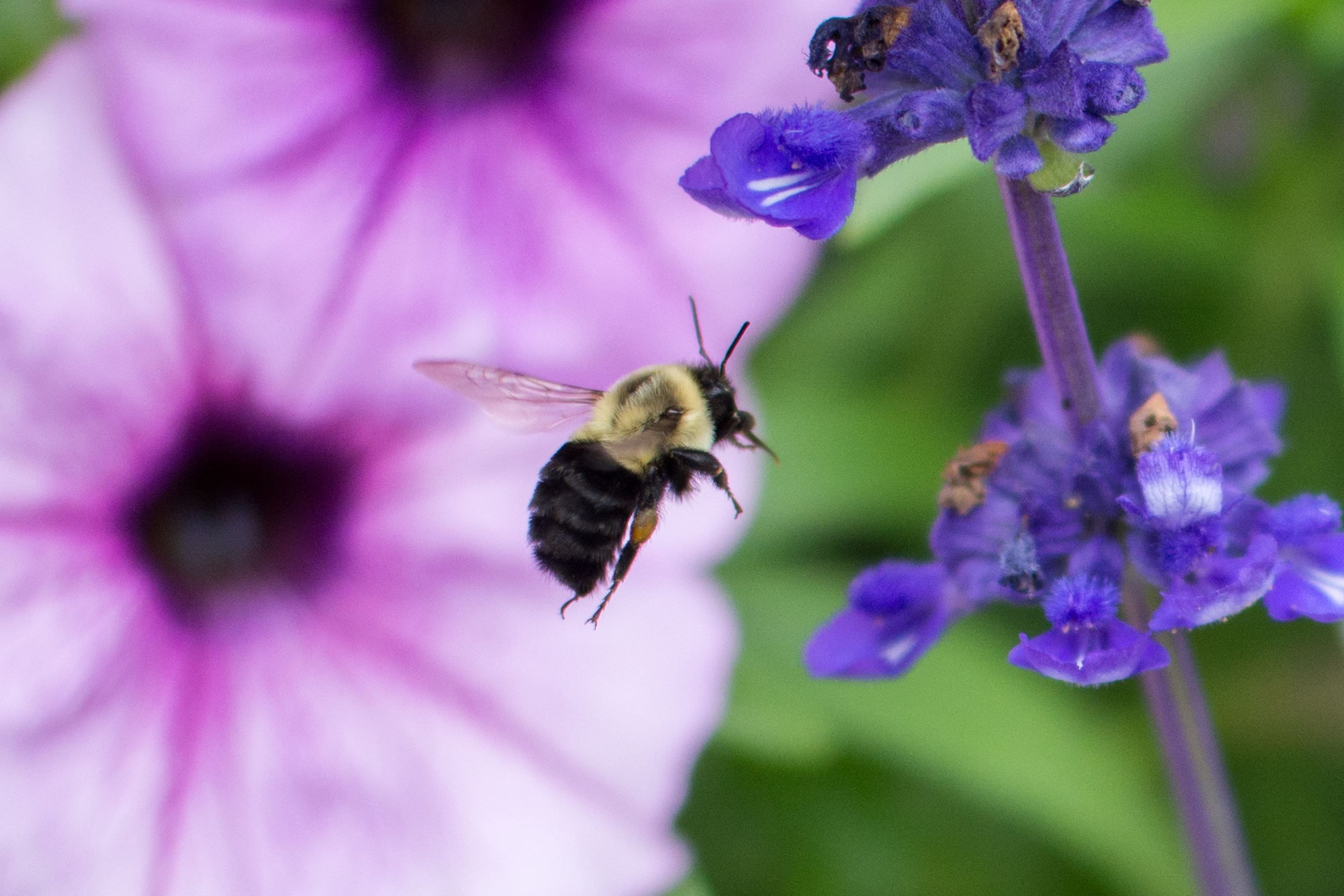Pollinator Friendly Fridley
Thank a Pollinator!
 Pollinators, such as bees, birds, and butterflies are crucial to a healthy ecosystem. One-third of the food and drink produced in the United States depends on pollinators, in addition to all of our garden plants and wildflowers. In Minnesota, there are close to 400 different types of native bees, with new species yet to be identified.
Pollinators, such as bees, birds, and butterflies are crucial to a healthy ecosystem. One-third of the food and drink produced in the United States depends on pollinators, in addition to all of our garden plants and wildflowers. In Minnesota, there are close to 400 different types of native bees, with new species yet to be identified.
Fridley is a Pollinator-Friendly city! Check out our resolution to support pollinators(PDF, 82KB).
How to Support a Pollinator
Pollinators are struggling due to habitat decline, parasites and pesticide use, but you can help! Your lawn is an important part of Fridley's urban ecosystem and can provide valuable pollinator habitat. For a pollinator-friendly yard, shrink your turf grass and replace it with flowering plants or transition it to a bee lawn. Here are some simple steps to get started:
Step 1. Prep your site
There are two main ways to plant a pollinator garden: by seed or using plugs. Seed mixes are typically less expensive, but take more time and maintenance to establish. Check out a Pollinator guide(PDF, 2MB) from the Xerces Society for a step-by-step guide on removing turf grass and prepping an area for seeding.
Step 2. Buy your plants
 Create a pollinator buffet by planting a diversity of plants that flower throughout the spring, summer, and fall. These resources from the Board of Water and Soil Resources and planter finder from Blue Thumb can help you pick the right plants for your yard. When it comes to buying pollinator-friendly plants, many can be found at major nurseries or specialty native plant stores. Some companies even sell kits with a range of pre-selected plants for a pollinator garden. Check the species list to make sure plants are native when buying seed labeled "bee mix" or "songbird mix".
Create a pollinator buffet by planting a diversity of plants that flower throughout the spring, summer, and fall. These resources from the Board of Water and Soil Resources and planter finder from Blue Thumb can help you pick the right plants for your yard. When it comes to buying pollinator-friendly plants, many can be found at major nurseries or specialty native plant stores. Some companies even sell kits with a range of pre-selected plants for a pollinator garden. Check the species list to make sure plants are native when buying seed labeled "bee mix" or "songbird mix".
When shopping for pollinator-friendly plants, try and avoid cultivars or hybrids which are often bred to have longer bloom times but may not provide the same ecological benefits. Varietals and cultivars can be identified by having a name in quotes (Echinacea purpurea "Fragrant Angel") while true species do not (Echinacea purpurea). Hybrids will have an X in the name indicating a cross between plants.
Step 3. Maintain your garden
Like most gardens, pollinator gardens must be watered and weeded to thrive. Protect habitat and pollinators by limiting the amount of pesticides in your garden, especially those with neonicotinoids, and rely on hand weeding instead. Consider maintaining your garden so that it is a desirable place for pollinators to live and overwinter by including areas of bare soil and delaying fall garden clean up until the spring when temperatures are regularly over 50 degree. If your pollinator garden is planted with native perennial vegetation, make sure it has an edged border- under Fridley city code, Designated Natural Areas must have an edged border to be exempt from mowing requirements.
Step 4. Consider a bee lawn
While pollinator patches planted with perennial plants provide the highest value of pollinator forage, we understand that many residents want to keep areas of turf lawn. You can transition your grass to a bee lawn by incorporating low lying flowering plants like clover, creeping thyme, and violets that are short enough to be mowed over. The University of Minnesota's Bee Lab has some great resources on how to add a bee lawn into your home.
Step 5. Check out funding sources
Depending on the scale, pollinator gardens can be relatively low cost. Perennial plants must be regularly split, so your neighbor may even have some free plants to give you to get started. Grant funding be available to help with some costs. A few resources to consider:
No Mow May
While the City supports the creation of more pollinator-friendly lawns, the City does not participate in the No Mow May initiative in which code enforcement around grass height is suspended in May. Fridley's grass height ordinance, which limits the height of grass to ten inches, exists to prevent grass from going to seed and causing a rodent population boom. Residents are able to make their lawn more pollinator friendly by raising their mower blade to allow for low-growing flowering plants, staging mowing around bloom times, or transitioning their lawns to bee lawns. Read more about No Mow May from the University of Minnesota's Bee Lab on how to implement the principles of No Mow May at your home while still complying with the existing grass height ordinance.
Keeping bees in Fridley
Raising bees for honey can be a fun hobby with the proper training. Fridley residents are allowed to raise honeybees if they have a "Beekeeping License" from the City. Prior to receiving your license, you must submit a certificate of completion of a honeybee keeping course. Contact the City Clerk at 763-571-3450 for more information on how to obtain a "Bee Keeping" license.